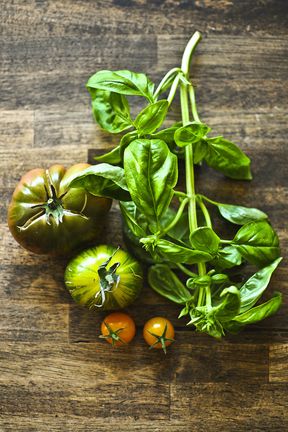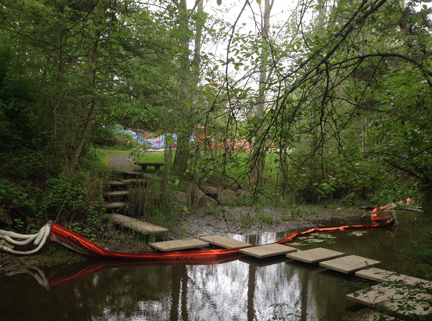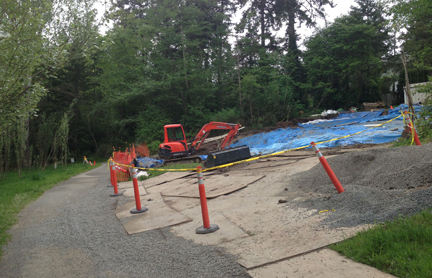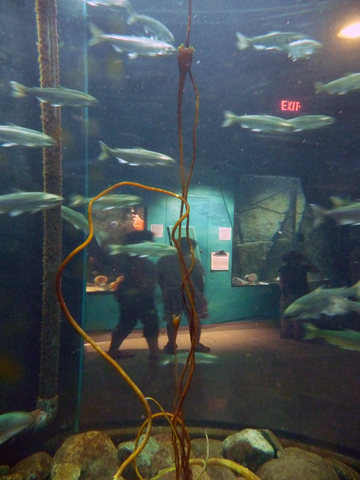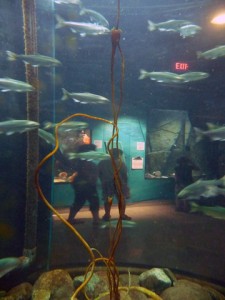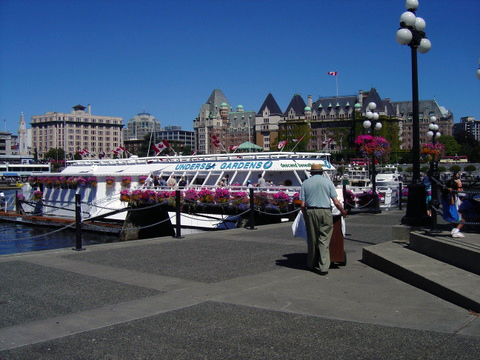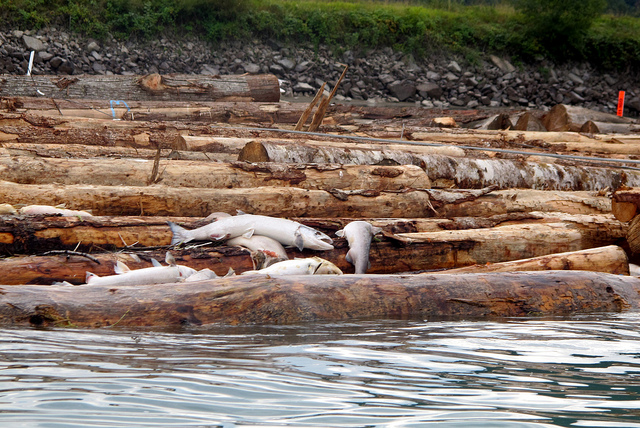
Victoria Times Colonist, November 17, 2012—October’s turn in weather, bringing rain after months of sun and heat, has at last raised water levels on the Cowichan River and cleared the way for the salmon.
How nice that something can enjoy the end to the glorious summer we had.
Just six weeks ago, the river nearly ran dry along some reaches. Salmon returning to the river found their passage upstream blocked by low water.
. Volunteers started rescuing the salmon. They trapped the fish, trucked them upstream, and released them at Sandy Pools and Skutz Falls.
But a month of rain has replenished river levels. I visited Skutz Falls a few weeks ago. There was still insufficient water to fill the fish ladders around the rapids, but Coho and Chinook were flinging themselves up the river’s natural white-water channels.
They are once again fulfilling their biological destinies by returning to their birthplace to reproduce.
And die.
The salmon’s instinctual call to destiny is a strange and wonderful thing. It places greater value on the interests of future generations than on any individual fish’s survival.
We could learn from that.
The problems on the Cowichan River stem from too much water being released via the Cowichan Lake weir earlier this year, leaving too little to buffer the river from severe drought six months later. But what happened here reflects river-flow problems across North America.
In Prince Edward Island, rivers were so low and warm this fall, fish became scarce. In the U.S., 160-kilometres of Nebraska’s Platte River dried up completely, and the mighty Mississippi fell by more than six metres.
Closer to home, below-average winter snowpack and months of dry, warm weather caused sections of rivers in the Peace Region to turn to mud and gravel. And on the Columbia River, annual flow has declined by more than 14 percent since 1950. One-third of the Columbia’s water originates in here in B.C.
What happens to the Columbia, the Kiskatinaw, the Moberly, the Beatton and the Cowichan can happen to the Fraser, the Skeena and, yes, the Goldstream and the Sooke.
After all, geologists report that Ontario’s Niagara and St. Clair rivers dried up completely 7000 years ago. A 25 to 40 percent decrease in annual precipitation and a 5o C rise in average temperatures caused water to evaporate faster from the Great Lakes than it was replaced. Lake levels dropped 20 metres, cutting off the rivers, shutting off Niagara Falls.
The study’s authors say similar temperatures and precipitation are within the range predicted for the region by 2100.
That is, what happened under climate change once can happen again.
Simon Fraser University researchers say we can expect a 20 percent drop in precipitation in B.C. by mid-century. Under climate change, spring and summer rains will decrease, and annual snow and ice accumulation in the province’s mountains and glaciers will decline. Glaciers store water in winter and release it slowly to rivers in summer. As glaciers disappear, late-summer river levels will fall drastically, right when demand for freshwater for agriculture, fisheries, industry and urban use increases.
Clearly, if these climate scenarios occur, B.C. rivers will experience increasingly difficult years.
British Columbians have always considered freshwater a renewable resource—one that falls from the sky like pennies from heaven. But when it ceases to splash down abundantly where and when it is needed, freshwater may become scarily scarce even here on the Wet Coast.
Kudos to the Capital Regional District for encouraging responsible water use. Despite a 14 percent increase in regional population, the CRD water board reports in its 2012 strategic plan that water use in the region has actually decreased by 11 percent since 2001. Seasonal watering restrictions, metering, rebates on water-efficient fixtures and appliances, and voluntary efficiency audits by businesses have brought about the gains, and will help extend our water supply.
However, more needs to be done by each of us.
It is time, while freshwater remains plentiful here, to learn from this year’s Cowichan River salmon, and reconsider how we each use and manage this resource now, so enough remains for future needs.
And for future generations of salmon.
–30–

